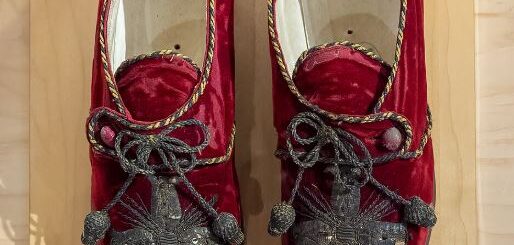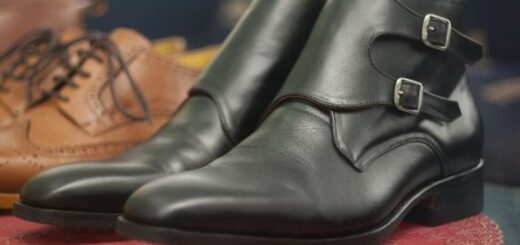Why Leather Shoes Crease and Why You Can’t Truly Remove Creases: A Complete Guide
When you wear leather shoes, it’s inevitable that they will develop creases. This characteristic is a natural outcome of how leather behaves under pressure and movement. Despite various claims, these creases cannot truly be removed permanently. To appreciate why, it’s important to delve into the structure of leather and the physical forces acting upon it.
Leather, at its core, is made up of a dense outer layer called the grain and a looser, more fibrous layer known as the corium. Between these two parts lies a transitional area where the fibers gradually change from tightly packed to more relaxed. This layered composition directly influences how leather responds when bent, flexed, or compressed.
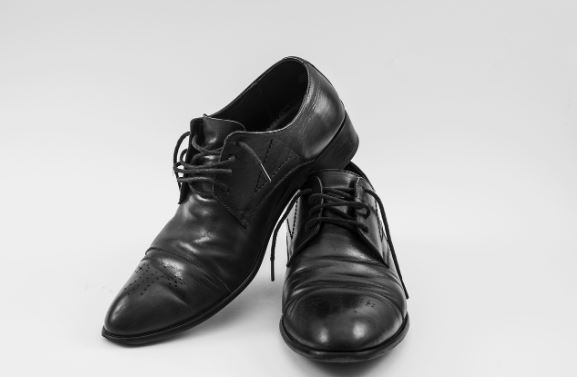
The Basic Composition of Leather
A cross-section of a leather hide reveals its dual nature. The grain layer on the surface consists of densely packed collagen fibers that form a strong, resilient barrier. Beneath this, the corium layer features looser, more flexible fibers. At the junction where these two layers meet, fibers start to loosen, resulting in different physical properties throughout the hide.
Full grain leather, prized for its durability and quality, retains the entire grain layer and the top portion of the corium. This leather type often receives minimal processing, maintaining the natural structure that allows it to perform exceptionally well against wear and tear. Other types of leather, such as corrected grain or embossed grain leathers, manipulate or remove portions of the grain for aesthetic or structural reasons, often sacrificing some durability in the process.
How Leather Structure Affects Creasing
The behavior of leather when it flexes comes down to how its fibers are arranged. In full grain and high-quality embossed grain leathers, the dense grain surface must cope with bending stresses. Because these tightly packed fibers have limited ability to stretch or compress, the leather responds by forming visible creases when subjected to the repeated bending motion of walking.
Unlike materials like suede, where the looser corium structure is on the outside and can flex with less resistance, smooth leathers can’t redistribute the stress as easily. As a result, the leather folds, creating lines that we recognize as creases. This is a natural physical reaction, unavoidable even with the most careful use or finest craftsmanship.
Comparing Full Grain Leather and Suede
The difference in creasing behavior between smooth leathers and suede lies in which part of the hide faces outward. In suede, the surface consists mainly of the softer corium layer. This makes it more flexible and able to bend around denser fibers without forming distinct creases. Instead, suede may show light marks or soft rolls when flexed, but it doesn’t crease in the same pronounced way that full grain leather does.
This distinction explains why suede shoes often appear to age more gracefully in terms of surface appearance, while smooth leather shoes display their wear through lines and creases over time.
What Happens Inside Leather When It Creases
Once leather folds under pressure, internal changes occur within its fiber structure. The rigid collagen fibers break down slightly where the bending happens, resulting in softened zones that become the path of least resistance for future movements. As you continue to walk in your shoes, the leather will naturally fold along these softened areas, deepening the creases.
Interestingly, the first few wears of a new pair of shoes often determine where the primary creases will form. Some enthusiasts recommend guiding the development of these creases deliberately, for example by inserting pencils across the vamp when breaking shoes in, to create neat, uniform lines.
Over time, while new minor creases can appear, the initial folds become the dominant features. Shoes typically experience their most significant visual change in the first weeks of use; after that, the leather’s appearance evolves more slowly.
The Myth of Permanent Crease Removal
The internet is filled with tutorials promising to eliminate leather shoe creases using methods like steaming, applying heat, or wetting the leather. While these techniques can temporarily smooth out the surface, they do not reverse the underlying damage to the leather’s structure.
Applying heat or moisture can cause the leather fibers to relax and realign briefly, reducing the visibility of creases. However, the broken-down areas within the leather remain weak points. Once you begin wearing the shoes again, the leather will quickly fold back into the same creased shapes as before. In fact, repeated use of heat and water can cause further weakening of the material over time.
Thus, while superficial smoothing can improve appearance temporarily for special occasions or resale, it doesn’t genuinely restore the leather’s original state or prevent future creasing.
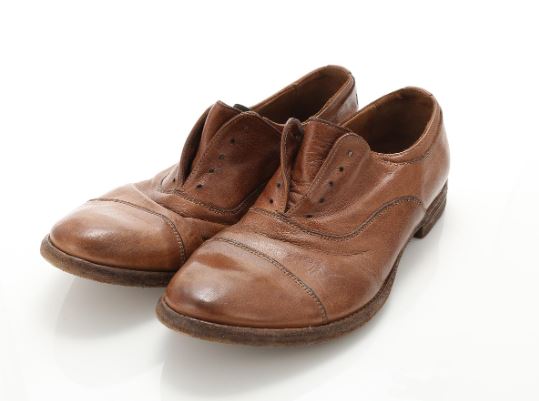
Risks Involved in Attempting Crease Removal
Beyond the fact that crease removal offers only a short-lived fix, the methods used can themselves be harmful to the shoes. Overheating can dry out the leather, leading to brittleness and increased risk of cracking. Similarly, excessive moisture can over-saturate the material, washing away important natural oils that help maintain its flexibility and durability.
If a person chooses to attempt crease removal, they should do so with full awareness of these risks. Using such techniques sparingly and carefully is crucial to avoid inflicting long-term damage that could prematurely age the shoes.
How to Properly Manage Creases in Leather Shoes
Rather than attempting to fight the inevitable, the best approach is to care for leather shoes in ways that minimize and manage creasing. Using well-fitted wooden shoe trees is a simple yet highly effective method. Shoe trees help maintain the shoe’s shape, flattening creases to some extent when not in use and slowing down the leather’s natural aging process.
Regular use of nourishing shoe care products, such as leather conditioners and creams, also plays a vital role. These products keep the leather supple, making it better able to withstand the mechanical stresses of walking without becoming brittle. Over the years, well-maintained leather will develop a rich patina, turning creases and marks into elements of character rather than signs of deterioration.
The Importance of Proper Fit
One factor that influences the severity and pattern of creasing is how well the shoes fit. Shoes that are too loose allow more leather to bunch up when flexed, leading to more pronounced and uneven creases. A well-fitted shoe hugs the foot closely enough to minimize excess material, resulting in finer, more orderly creases.
Thus, investing in shoes that fit properly not only enhances comfort but also improves their appearance over time. Custom or bespoke footwear offers the highest level of fit precision, but even ready-to-wear shoes can perform admirably when carefully chosen.
Embracing the Natural Aging of Leather
Ultimately, creasing is part of the life story of a pair of leather shoes. Much like wrinkles on a well-lived face, they tell the story of where the shoes have been and the experiences they have weathered. For many enthusiasts, the gradual development of creases and the deepening of patina are not flaws but rather hallmarks of authenticity and craftsmanship.
Rather than viewing creases as something to be erased, embracing them as part of the beauty of natural materials offers a deeper appreciation for the quality and history embodied in a well-made pair of shoes.
Conclusion: Respecting Leather’s Nature
Leather is a remarkable, living material that evolves over time. While it can be polished, conditioned, and carefully maintained, it cannot defy the fundamental laws of physics. Creasing is a natural and irreversible part of how leather responds to movement and pressure.
Understanding this allows shoe owners to focus on meaningful care practices that preserve the beauty and function of their footwear. With regular maintenance, thoughtful wear, and acceptance of the changes that come with time, leather shoes can become ever more distinguished, offering comfort, character, and style for many years.
Frequently Asked Questions
Why do leather shoes develop creases?
Leather creases because when bent, the dense grain layer has nowhere to move, forcing it to fold.
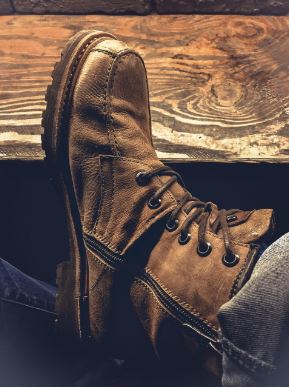
Can creasing be completely avoided in leather footwear?
No, creasing is a natural response of full grain and embossed leather when the shoes flex during walking.
What parts of the leather structure contribute to creasing?
The grain layer with dense collagen fibers is responsible, as it is unable to stretch freely under pressure.
How does suede differ in creasing compared to smooth leather?
Suede shows fewer creases because its looser fiber structure can flex around itself without folding sharply.
Is it possible to remove leather creases permanently?
No, any method used to “remove” creases only temporarily smooths the surface; the fibers remain broken.
What techniques are often advertised to remove leather creases?
Heat and moisture treatments are common, but they only offer a short-term visual improvement.
Why do creases reappear after trying to remove them?
The broken fiber structure makes it easier for the leather to fold again in the same places once worn.
How does initial wear affect long-term creasing?
The first few wears largely determine where the leather will continue to crease permanently.
What are the risks of trying to remove creases with heat?
Applying heat can stress or even damage the leather, potentially weakening it further over time.
Can shoe trees help with creasing?
Yes, using wooden shoe trees maintains shoe shape, stretches out soles, and minimizes deep creasing.
Does the quality of leather affect how it creases?
Higher quality full grain leather tends to crease more gracefully, while corrected or lower-grade leathers crease more heavily.
How can you prolong the life of leather shoes despite creasing?
Regular use of shoe trees, proper conditioning, and thoughtful care will reduce damage and extend durability.
Did You Know?
- Once leather creases form, the internal fiber structure is permanently altered, making the folds return even after smoothing efforts.
- High-quality full grain leather naturally creases less dramatically than lower-grade leathers, showcasing its durability and strength over time.

